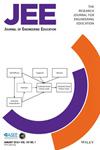Artificial intelligence in engineering education research: Using machine learning models to predict undergraduate engineering students' persistence to graduation
Abstract
Background
Attrition of engineering students continues to be a concern in higher education. Despite indications that students who opt to leave engineering programs may go on to make meaningful contributions in other fields more aligned to their interests, it remains essential to support those who choose to stay in engineering with the necessary resources, mentorship, and enabling environments to thrive.
Purpose
This study explores predictors of persistence to graduation for students in a College of Engineering (CoE), examining pre-college preparation (SAT scores), academic performance in core courses, demographic factors, and engagement in co-curricular activities.
Methods
We analyzed a 10-year dataset (fall 2007 to fall 2016) from a US R1 university's CoE, comprising 16,292 observations. Machine learning techniques, including dimensionality reduction (forward, backward, and unidirectional stepwise regression), explainable artificial intelligence, and predictive modeling (K-nearest neighbors, logistic regression, decision trees, artificial neural networks, and gradient boosting), were applied to identify significant predictors of persistence.
Results
Key predictors of persistence included students' GPAs in their first two years and SAT math. Additional factors, although not consistently ranked highly by all models, include performance in PHYS 211, CHM 110, and MAT 140 (Physics 1, Chemistry 1, and Calculus 1, respectively). Demographics and engaging in co-curricular activities also contribute to persistence, although not as significantly as academic factors.
Conclusion
Findings from the machine learning models extend Tinto's theory of persistence, and identify key factors that predict engineering students' persistence to graduation. We recommend that institutions engage in strategic planning and policymaking as part of their collective effort to reduce engineering student attrition.


 求助内容:
求助内容: 应助结果提醒方式:
应助结果提醒方式:


